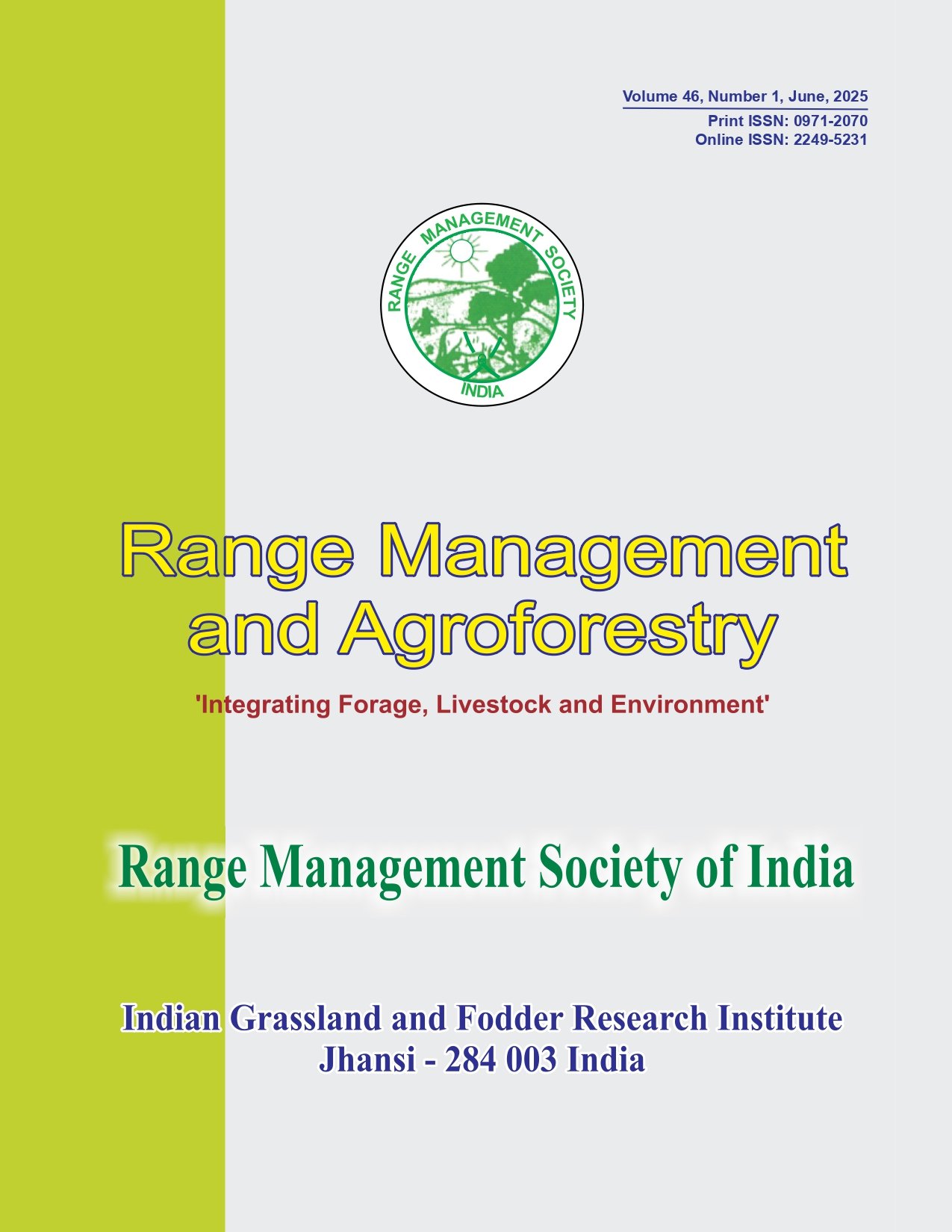Growth and quality parameters of oat (Avena sativa L.) cultivars as influenced by different cutting management in irrigated subtropical conditions
DOI:
https://doi.org/10.59515/rma.2024.v45.i1.12Abstract
An investigation was conducted at SKUAST, Jammu, during Rabi 2018-19 and 2019-20 to assess the effect of different cutting managements on the growth and quality of multicut oat cultivars. The experiment was laid out in a randomized block design with 14 treatments and three replications. A severe drop in plant height and number of tillers/m2 was observed in double cut management system at maturity. Higher fresh and dry weight was recorded at the second cut than at the first cut, resulting in a higher forage yield. However, in the case of quality parameters, no significant difference among the treatments was recorded on the cuttings. Fodder oats harvested at 60 days after sowing (DAS) recorded higher crude protein and lower acid detergent fiber, neutral detergent fiber, and hemicellulose when compared to those harvested at 105 DAS. Thus, on the basis of two years of experimentation, it was concluded that a single cut provides superior quality fodder. However, if an additional cut is taken at 105 DAS, there is a slight reduction in the quality of fodder, but higher fresh and dry weights of fodder are obtained. However, single-cut treatments recorded superior plant height, number of tillers, grain as well as straw weight. Among cultivars, JHO-2000-4 stood out in both the cutting managements in almost all the parameters.








